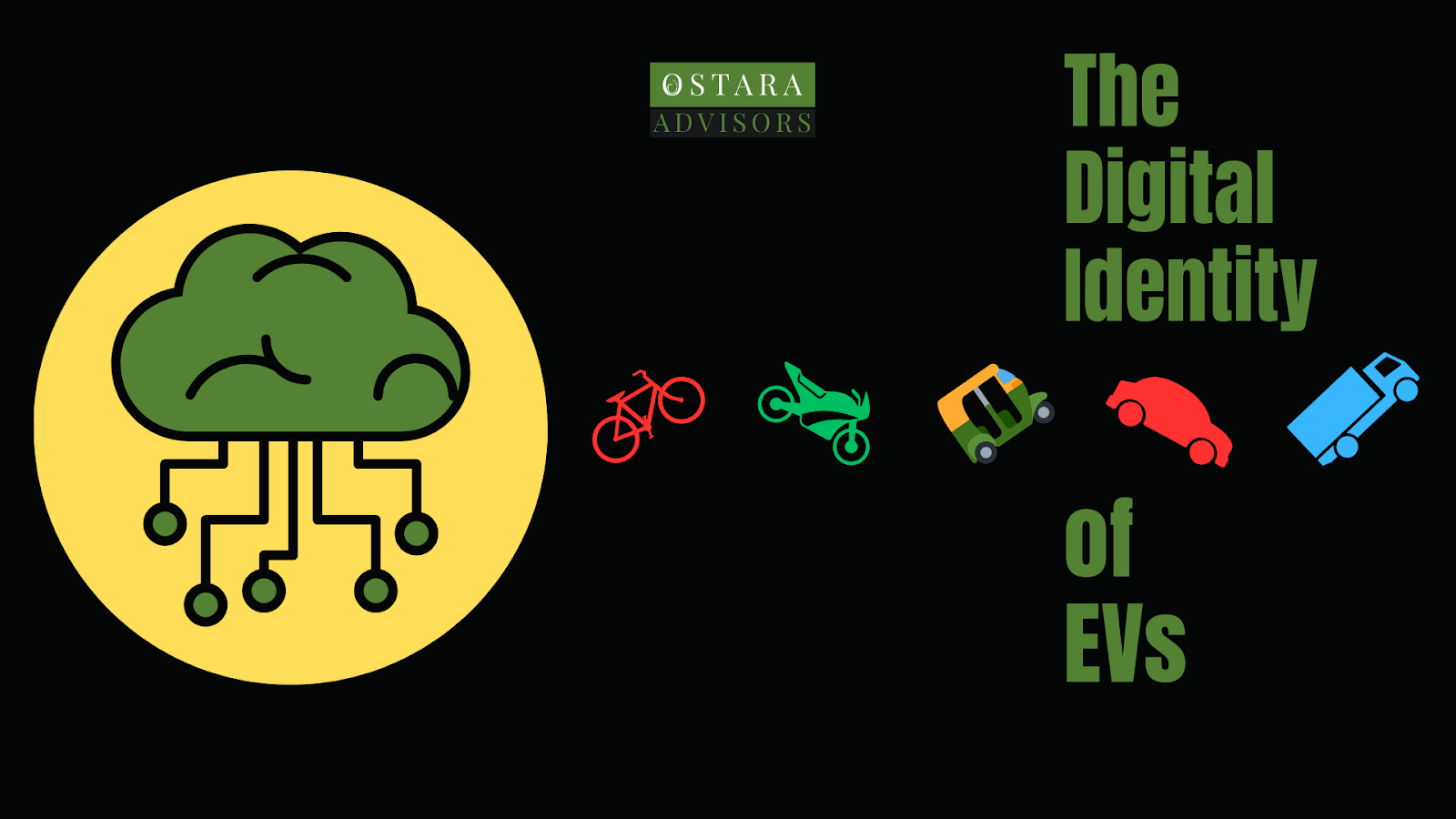We’ve all come across IoT (Internet of Things) in some form or the other in our daily lives like wearables that track our activity and fitness, navigating using GPS-tracking on our phone, smart toll-collection and many more…
The Institute of Electrical and Electronics Engineers (IEEE) defines IoT as a system of self-adaptive and complex networks of objects. IoT uses intelligent physical objects, primarily electrical ones, that are network-connected and capable of data exchange, thanks to integrated software, sensors, and other technologies.
Ever wondered how IoT plays a role in Electric Vehicles? Well, IoT gives an EV its digital identity! Read on to find out more, in, IoT- The Digital Identity of EVs.
The Role of IoT in EVs
The drivetrain in an ICE vehicle contains 2,000+ moving parts typically, whereas the drivetrain in an EV contains around 20, predominantly using electronics. This makes it eminently suited to IoT applications in automotive engineering.
IoT in EV can be used in several ways, including to improve customer experience. This can be done by analyzing performance parameters of the vehicle, warning drivers of possible malfunction, helping find the nearest charging station and many more.
IoT & Telematics
Telematics is a method of monitoring vehicles, equipment and other assets by using GPS technology and on-board diagnostics (OBD), through data received from vehicle sensors, to plot the asset’s movements on a computerized map.
How does IoT in Telematics work?
Collect: Gather data from sensors and various other devices in a home, vehicle, or manufacturing plant.
Communication: Send the data to a cloud platform or a personal data centre using a communication gateway through Wi-Fi, 4G, or 5G, etc.
Analysis: Collect useful information from the raw data to visualize, generate reports, and to make predictions.
Action: Based on the analysis, communicate with other devices through machine-to-machine (M2M) protocols, or send notifications (SMS, email, etc) to the concerned persons for rectifying any errors.
What is the use of this data to the Driver or the Fleet Operator?
The data can be put to use broadly as follows:
Driver Analysis:
- Data gathered from the DTG (Digital Tachometer Graph) and GPS indicates vehicle status in terms of distance traveled, time taken, over-speeding during the journey, malfunctioning, records the exceptional events, and warnings.
- Telematics provides the best route for travel and by comparing the driving analysis data it refines the result for better route optimization, provides warnings on exceeding the driving speed limit, and vehicle services status.
Safety and smart driving:
- EV score over ICE vehicles on reliability. Thefts are prevented through real time tracking, geo-fencing and immobilization thus reducing dependence on insurance which is usually a hassle for common people.
- The driver gets alerts about possible future battery malfunctions, technical glitches, keeping in mind the geographies and moisture conditions to increase the accuracy while also buying users time to deal with it easily. Thus, instead of being randomly ditched in the middle of the road, now drivers have a chance to be prepared for the worst.
- Pairing the IoT with fleet management technology helps service providers and fleet operators embrace predictive analytics.
Sources: Electronicsforum, iotforall, iot-fleet-management
IoT & EV Chargin
IoT can help optimize energy consumption during peak hours, charging time etc. It taps data from the Charging Equipment, the Mobile App and sends it over to the Cloud platform and improves customer experience in the following ways:
User verification: As soon as the customer taps her RFID card/tag or uses a smartphone for access, the charging station sends this data to the IoT platform over the cloud. The IoT platform then checks the driver’s profile, performs Authentication, Authorization, and Accounting activity, and ensures secure transactions and billing.
Charger availability: Similar to booking a seat at a restaurant, the EV charging app can search for nearby stations, check availability, and reserve a slot for the required time, based on the battery capacity. The app can also indicate charging rates or advise off-peak hours for low-cost charging.
Automated operations: While the EV is charging and the driver is away, the station can notify drivers of the exact charging time left, any error in cable connection, automatic payments, or even call for emergency assistance in case of any critical events working autonomously.
How does it help the CPOs?
Smart charging – Energy rates vary during seasons, for example, summertime with abundant solar energy production and demand during peak hours during the day. The chargers can automatically start charging when they find the lowest rates available from the grid and vice versa. In order to be sustainable and to make sure we can provide during the peak hours the IoT tries to accordingly schedule slots to distribute load and utilize the grid efficiently.
Remote management – IoT enables Charge Point Operators (CPOs) to quickly resolve issues and remotely manage operations by presenting insights into usage and device performance. Insights such as charger availability, utilization, fault monitoring, and troubleshooting greatly help in predictive maintenance and reducing downtime.
EVSE control – IoT platform collects data from various sensory nodes and analyzes grid limit, energy tariffs, EV battery capacity, and state of charge. Taking this data into account, it becomes easier to control and manage a large fleet of charging infrastructure.
Source: einfochips
Deals & Developments
Mar 2023: BlackBerry sets up State-of-the-Art IoT Center in India to revolutionize software-defined vehicles
Mar 2023: Railways To Equip Nearly 9,000 Locomotives With IoT Devices For Live Tracking Of Trains With ISRO Help
Feb 2023: India’s mobility sector to be supercharged by IoT in 2023
Dec 2022: Plugzmart’s IoT-Enabled Chargers Can Charge All Kinds of EVs In 40 Minutes
Dec 2022: ThingsUp, An IoT Platform Raises Seed Funding from Silverneedle Ventures & Others
















